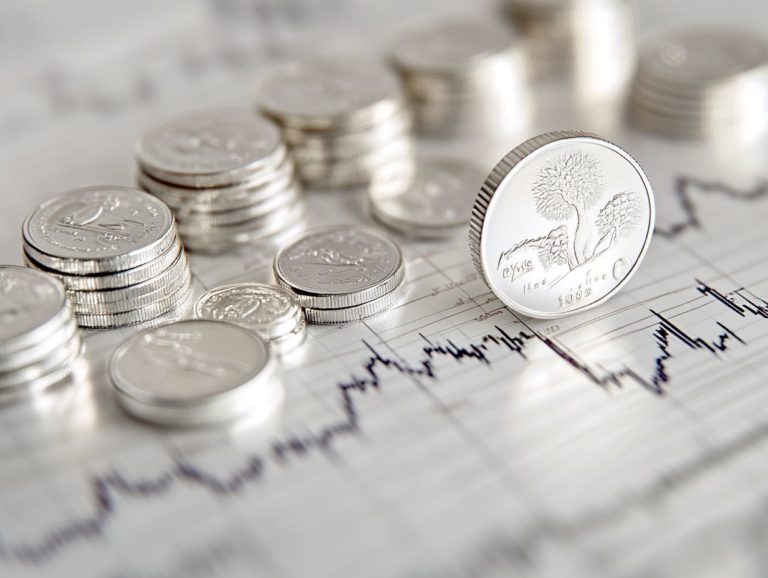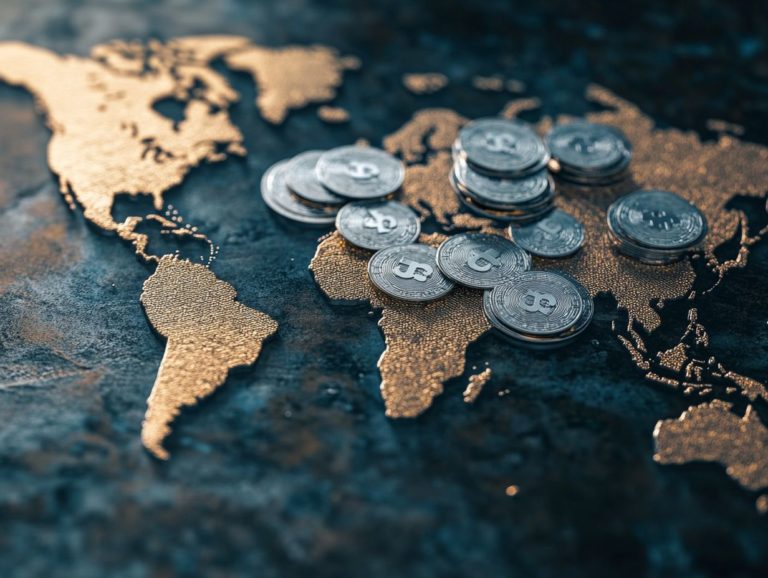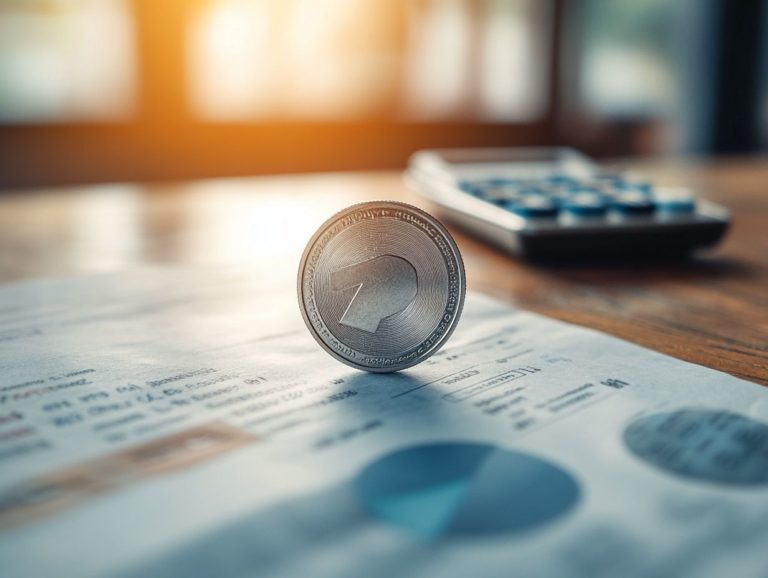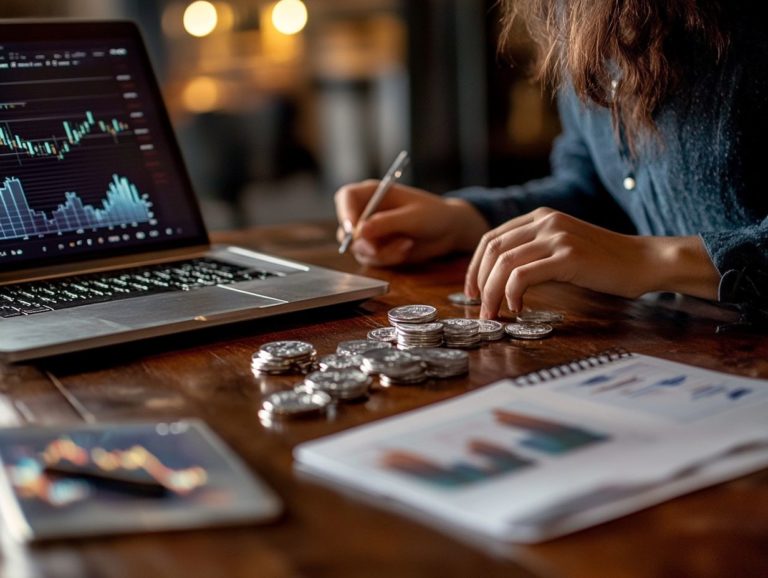The Importance of Silver in Economic Crises
In times of economic upheaval, silver stands out as a beacon of stability.
Let s explore the many ways silver can help you during a crisis. This exploration traces its historical significance and reveals why it retains value amidst inflation and the uncertainties surrounding fiat currencies. You ll uncover effective investment strategies for navigating turbulent times, see how silver compares to other traditional safe-haven assets, and gain insights into its potential impact during future economic downturns.
Discover how silver can protect your wealth!
Contents
- Key Takeaways:
- The Role of Silver in Economic Crises
- Why Silver is Valuable in Times of Crisis
- Investing in Silver during Economic Turmoil
- Silver as a Safe Haven Asset
- The Future of Silver in Economic Crises
- Frequently Asked Questions
- How does silver perform during economic downturns?
- Why is silver considered a hedge against inflation?
- What role does silver play in a diversified portfolio during economic crises?
- Is investing in silver a viable strategy during economic crises?
- How has the demand for silver changed during economic crises?
Key Takeaways:
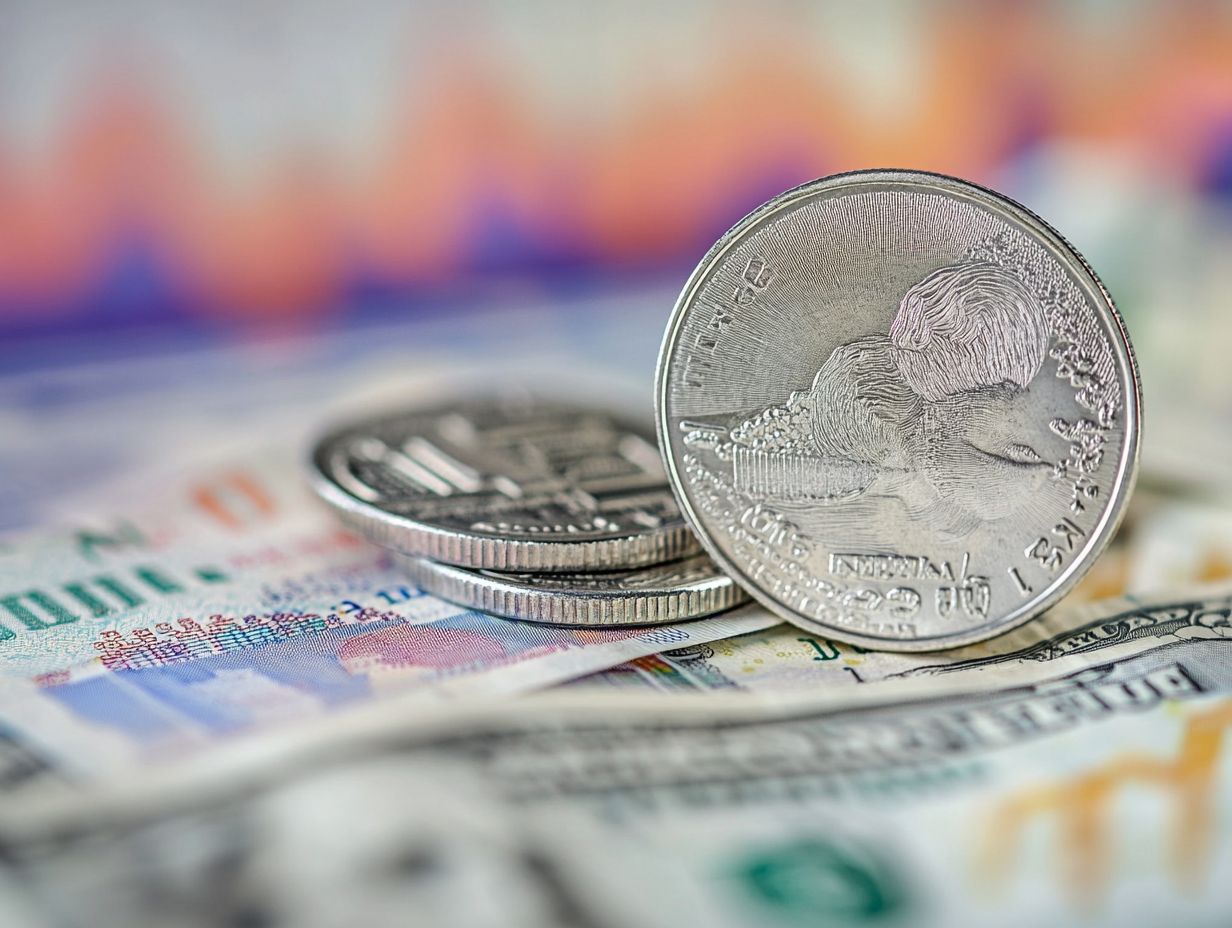
- Silver has played a significant role in economic crises throughout history, serving as a store of value and medium of exchange during turmoil.
- In times of crisis, silver’s value often connects to concerns about inflation and the stability of fiat currency, making it a valuable asset for investors seeking protection.
- Investing in silver during economic turmoil requires careful strategy, as its value can fluctuate greatly. It is important to diversify and research before making any decisions.
The Role of Silver in Economic Crises
Silver holds an important role during economic crises, serving as an indicator of how the market is behaving amid the ebb and flow of silver prices and precious metals.
You may find that demand for silver tends to rise during recessions and periods of economic uncertainty, underscoring its reputation as a safe-haven asset.
Market analysts point out that both industrial demand and available silver reserves play significant roles in shaping silver prices, particularly as central banks adjust their monetary policies in response to economic trends.
Grasping these factors can offer you valuable insights into broader implications for commodity investors maneuvering through financial instability.
Historical Perspective
The historical perspective on silver showcases its dynamic role throughout economic cycles, particularly during times of inflation and recession. In fact, you might find that silver frequently outperforms assets like gold and stocks when market uncertainty looms.
Consider significant recessions, such as those from 1973 to 1975 and the downturn in 2001; these moments had a profound impact on silver pricing. During these challenging periods, silver not only held its value but often surged as investors flocked to safe-haven assets.
The Gold-to-Silver ratio tells us how many ounces of silver it takes to equal one ounce of gold and emerges as a crucial indicator in this narrative, offering insights into market dynamics and the relative performance of these precious metals. When you analyze historical trends, you’ll notice that during corrections triggered by economic downturns, silver consistently exhibits remarkable resilience, reinforcing its status as a strategic investment in the face of market volatility.
Why Silver is Valuable in Times of Crisis
The value of silver tends to soar during times of crisis, primarily driven by rising inflation and growing concerns about fiat currency. This prompts you, as an astute investor, to seek out tangible assets that offer resilience against economic uncertainty.
Inflation and Fiat Currency Concerns

Inflation raises serious concerns for fiat currency, prompting you to explore alternative safe-haven assets like silver, which tend to be less vulnerable to price fluctuations.
As the purchasing power of your money diminishes, turning to silver can offer a reliable store of value, particularly in times of economic uncertainty. This trend is becoming increasingly clear as market behaviors reveal a growing demand for precious metals.
You re likely not alone in recognizing silver s historical significance as a hedge against inflation; its stability amid volatility draws many to it. As economic downturns unfold, interest in silver surges, impacting its market price and availability. In your quest for tangible assets to safeguard your wealth, the appeal of silver becomes all the more compelling.
Investing in Silver during Economic Turmoil
Investing in silver amid economic turmoil demands a well-thought-out strategy and a keen grasp of market dynamics. During these critical times, savvy investors often look to leverage how prices move, making informed decisions that can yield significant rewards.
Strategies and Considerations
Successful investment strategies during economic crises require thorough economic analysis and an understanding of silver’s price fluctuations. It’s essential to recognize its tendency to outperform other assets.
Closely monitor several factors that influence silver prices, such as geopolitical tensions, industrial demand, and the monetary policies implemented by central banks. Timing your purchases is crucial; acquiring silver during market dips can significantly enhance your returns once conditions improve.
Understanding the diverse applications of silver ranging from electronics to renewable energy offers valuable insight into long-term demand. The actions of central banks can either bolster interest or introduce volatility. By paying attention to these dynamics, you empower yourself to make informed decisions in an ever-fluctuating market.
Silver as a Safe Haven Asset
Silver stands as a premier safe-haven asset, particularly during periods of financial instability. Its historical performance often eclipses that of gold and other precious metals, making it a compelling choice for those seeking resilience in their investments.
Comparison to Other Safe Haven Assets
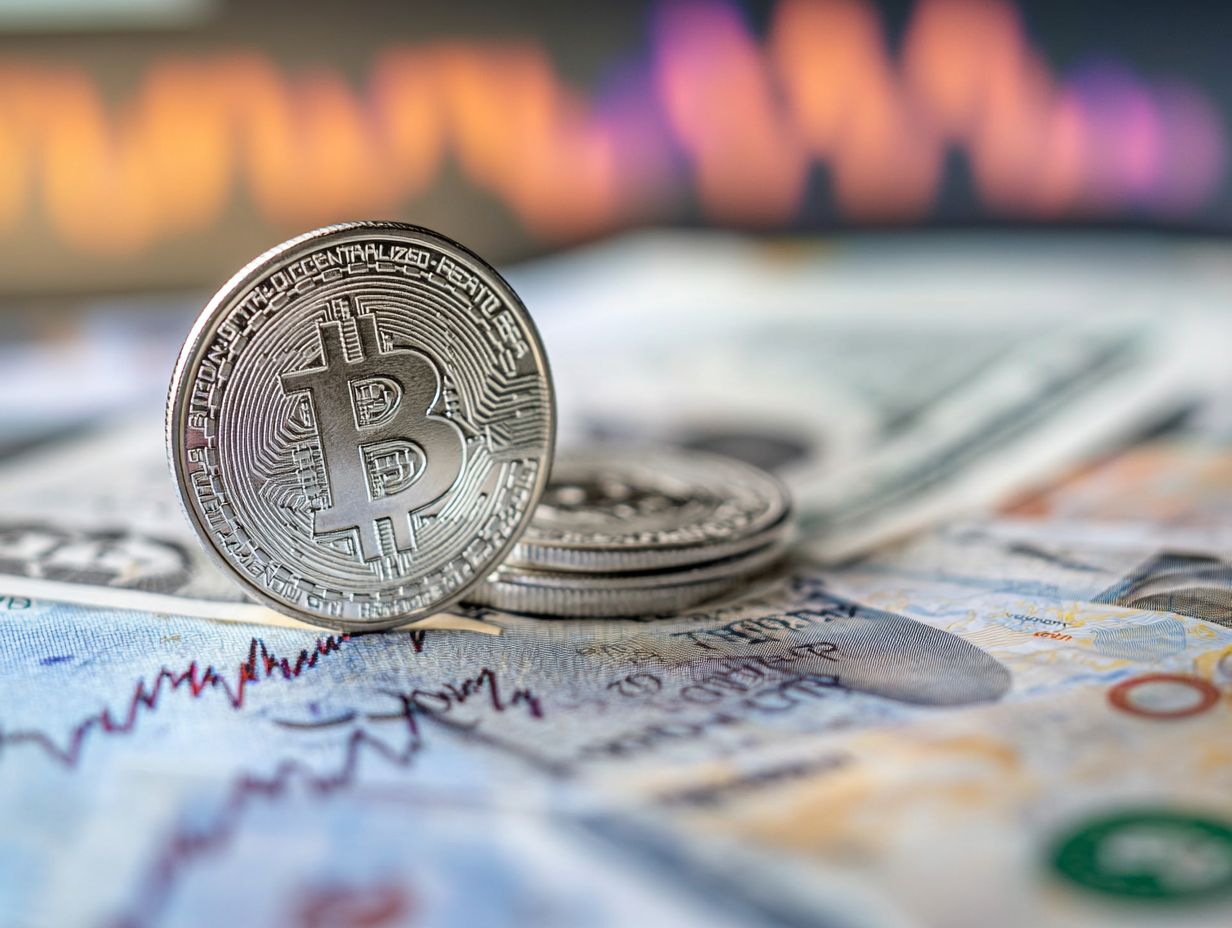
When you compare silver to other safe-haven assets like gold, you’ll notice that silver often shines brighter under certain market conditions, especially during times of heightened economic uncertainty.
This intriguing tendency stems from silver’s unique dual identity as both an industrial metal and a precious asset. Historical data shows that during financial turmoil, silver has frequently experienced significant price surges. Sometimes, it even surpasses gold s performance.
This dynamic is prompting commodity investors to view silver as a compelling alternative, especially when traditional markets show signs of volatility. The lower market capitalization of silver compared to gold can lead to more dramatic price fluctuations, attracting those looking for potential high returns amid chaos.
The rising demand in industries like electronics and renewable energy makes silver more appealing for investors seeking both safety and growth potential.
The Future of Silver in Economic Crises
The future of silver during economic crises is incredibly exciting!
Predictions indicate that its role as a reliable hedge against economic downturns is set to expand, presenting significant investment opportunities for discerning investors.
Predictions and Potential Impact
Predictions regarding silver’s performance during future economic downturns suggest a potential surge in its value, driven by increasing market expectations for safe-haven assets.
As economic uncertainties approach, many investors tend to gravitate toward precious metals, viewing them as a dependable store of value. Financial media outlets highlight how rising inflation, geopolitical tensions, and fluctuations in major currencies can enhance silver’s allure.
The liquidity of silver can shift, impacting how quickly you can enter or exit your positions. When market volatility spikes, demand for silver tends to soar, creating a ripple effect on prices that could sway investor sentiment towards diversifying portfolios with this metal. This strategic choice often mirrors a broader desire for security during uncertain times.
Frequently Asked Questions
What is the importance of silver in economic crises?
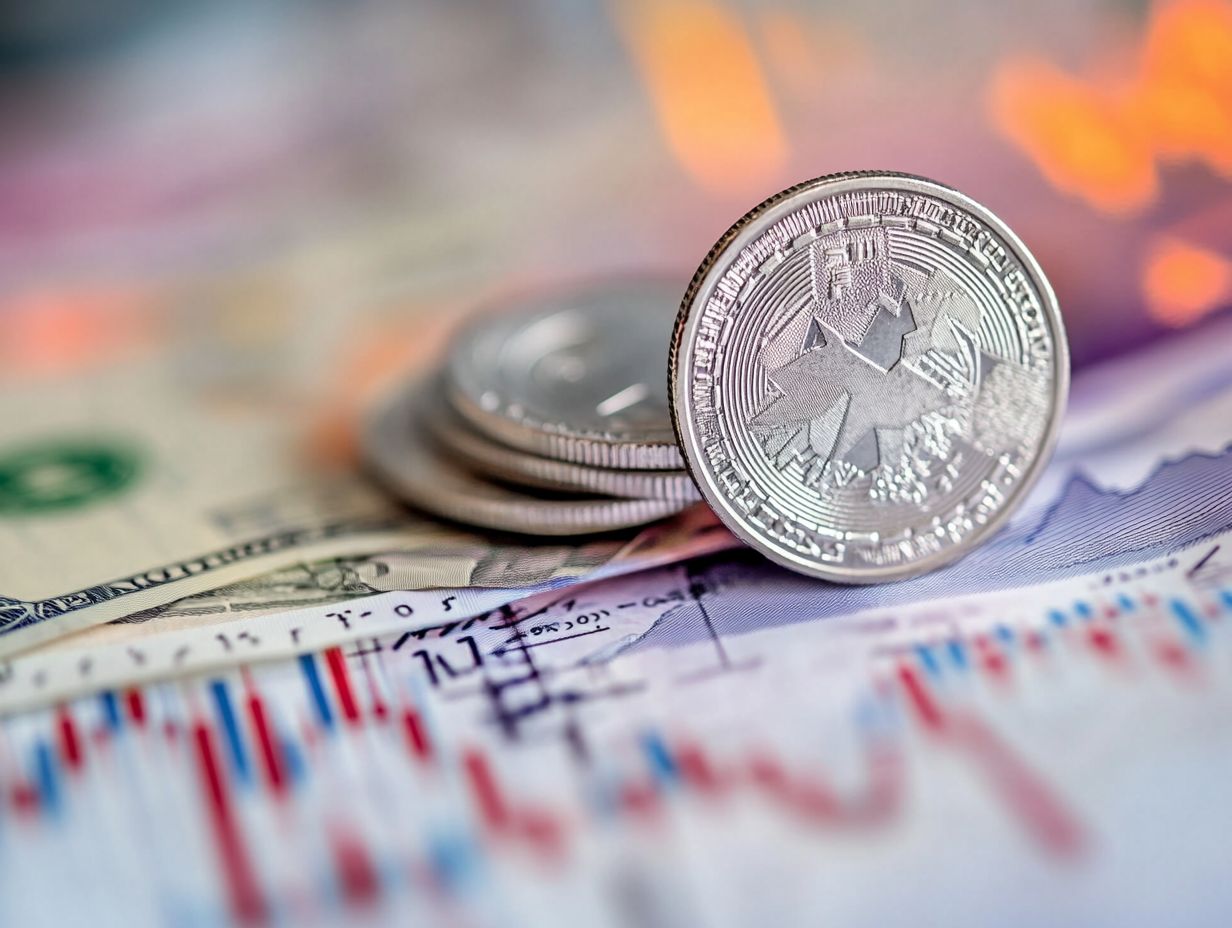
Silver has long been recognized as a safe haven asset during economic crises due to its intrinsic value and scarcity, making it a valuable tool for protecting wealth and hedging against inflation.
Explore how silver can safeguard your investments today!
How does silver perform during economic downturns?
Silver often shines when the economy struggles. Investors turn to it as a safe store of value during tough times.
Why is silver considered a hedge against inflation?
Silver has proven to maintain its value, especially during high inflation. This makes it a smart choice for protecting against the decline of paper money.
What role does silver play in a diversified portfolio during economic crises?
Adding silver to a diverse investment mix helps reduce risk. It often moves differently than stocks and bonds, providing balance during economic downturns.
Is investing in silver a viable strategy during economic crises?
Many experts suggest including silver in your investment strategy during uncertain times. It can stabilize your portfolio and may even increase in value.
How has the demand for silver changed during economic crises?
Demand for silver typically spikes during economic crises. This spike is due to its use in industry and as a safe investment, which can lead to price increases and profitable opportunities.










